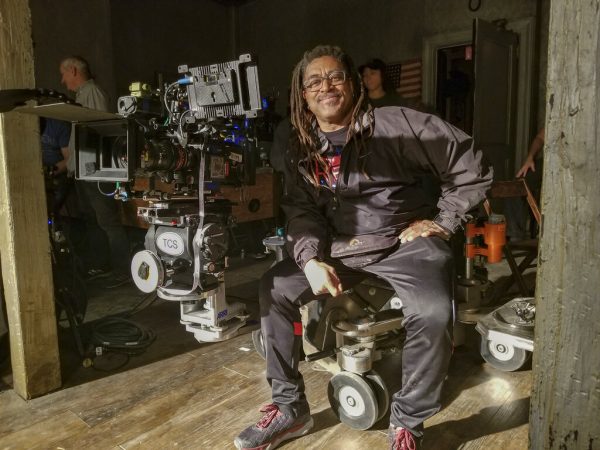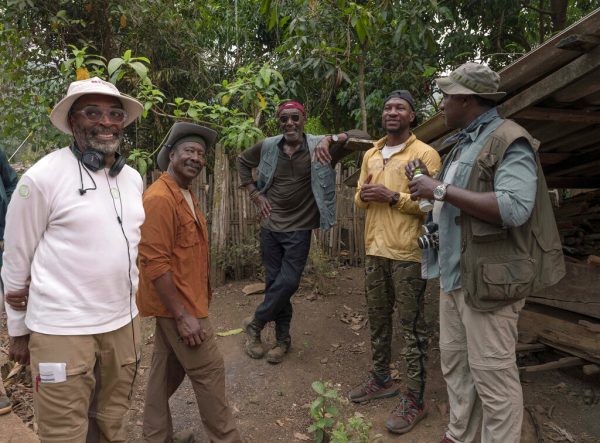
By Jake Coyle, AP Film Writer
When David Lee was growing up in Brooklyn, his older brother would drag him out of the house whenever he got the urge to make a film.
“Spike would say, ‘You gotta come with me. I’m shooting something,'” says David Lee. “His early impulse was to document. The ’77 blackout, he went out and filmed. He would yank me and say, ‘Come on. Come on.'”
In an artistic family (Spike and David’s father, Bill Lee, is a well-regarded jazz musician who scored several of Spike’s early films), David took up still photography. David, four years Spike’s junior, discovered photography when an upstairs tenant in their family’s brownstone taught him how to process 35mm black-and-white film.
Spike, meanwhile, was already on his way as a movie director. And from the beginning, no one had a front-row seat to the birth and evolution of the master American filmmaker like David. From Spike’s first feature film, “She’s Gotta Have It,” and ever since, David has been his brother’s on-set photographer.

He was there to capture Spike, in a Jackie Robinson jersey as Mookie in “Do The Right Thing,” in the afternoon light of a Brooklyn street. He was there to photograph Denzel Washington lounging in the backseat of a convertible in “Malcolm X.” He was there for some of Chadwick Boseman’s last moments on film during the making of “Da 5 Bloods.”
“Spike,” a new retrospective photography book to be published Nov. 17, is filled with images David shot over the years, with stills from Spike’s 35-plus films. It even comes complete with custom typography based on Radio Raheem’s “LOVE/HATE” brass knuckles from “Do the Right Thing.” It’s a hefty, glossy compendium of the still-unfolding career of one of cinema’s most clarion voices. It’s also an intimate story of family, with siblings on both sides of the camera: Spike as seen through his brother’s lens.
“It’s kind of funny when your brother becomes famous,” David, 60, said in a recent interview. “He’s always been my brother, but then he’s like a world possession somehow. People in Fort Greene would always talk to him as if they knew him.”
And from the start, Spike understood something about self-promotion. Few filmmakers since Alfred Hitchcock have made themselves more recognizable to a moviegoing public. As the unit photographer whose images are used in a movie’s marketing, David’s pictures helped create his brother’s iconography — including those Nike commercials with Michael Jordan. He fondly remembers an early trailer for “She’s Gotta Have It” where Spike sells the movie while hocking tube socks on Fulton Street.
Many images — like that one of Mookie — David can’t always recall whose idea it was.
“I don’t know if I did it or Spike said, ‘Take a picture of this or that.’ Spike always had this other awareness of promoting himself,” said David. “Spike entered the mainstream on his own terms.”
That included, by way of his production company, 40 Acres and a Mule, far more diverse film sets than were seen elsewhere in the industry. David recalls Spike bringing lists of Black crew members, including himself, to the various guilds to get them inducted into unions.

But the 40 Acres crew — many of whom have lasted since the late ’80s and early ’90s — also included Spike’s actual family. Their younger sister, Joie Lee, has appeared in at least nine of Spike’s films. Their younger brother, Cinqué Lee, has had various duties, including co-writing 1994’s “Crooklyn.” There are, David jokes, no business school graduates among the Lees.
“From The Beginning I Have Kept It All In The Family, Thanks To God For Talent In The Lee Family,” Spike said in an email.
But why would Lee want a 360-page capstone to a movie career while still in the midst of it? Just during the pandemic, Lee has released two features ( the Vietnam war drama “Da 5 Bloods,” the documentary “David Byrne’s American Utopia” ), been president of the Cannes Film Festival jury and begun prepping a movie musical about the origins of Viagra. He also, like during the ’77 blackout, documented New York under the first wave of the pandemic in a short film.
In the book’s first pages, Spike explains: “This Book Revisits All Da Werk I’ve Put In To Build My Body Of Work. Film Is A Visual Art Form And That Sense Of My Storytelling Has Been Somewhat Overlooked. Why Now, After All These Years? FOLKS BE FORGETTING.”
For David, the book is a moment to reflect on how his brother’s body of work — once received as so incendiary by some — has only grown more prescient with time. When “Do the Right Thing” first debuted, some columnists famously predicted it would incite riots.
“It shouldn’t have seemed revolutionary or such a startling conversation to start. It just really underscored the difference to me how white people and Black people, very broadly, view the different attitudes toward race relations,” says David. “White people seem eternally startled by Black outrage. It shouldn’t be a new story.”
David doesn’t exclusively shoot Spike’s films. He has more than 90 credits. During a recent interview, he was in Pittsburgh for a Netflix film about the civil rights leader Bayard Rustin. And sometimes, their experiences of the past 35 years vary wildly.
“I’m not sitting there courtside at the Knicks games,” David says, laughing. “I’m not palling around with the Obamas.”
But flipping through “Spike” captures a filmmaker’s journey that starts out like a family photo album. There in a photograph of Spike’s film school graduation is David next to him, with a camera slung over his shoulder. That he’s been along on the ride ever since still astounds David.
“There’s so much talent in front of you. It’s like a jazz trio. I’m in the band!” says David. “So much is laid out for me to try to capture.”
___
Follow AP Film Writer Jake Coyle on Twitter at: http://twitter.com/jakecoyleAP
___



